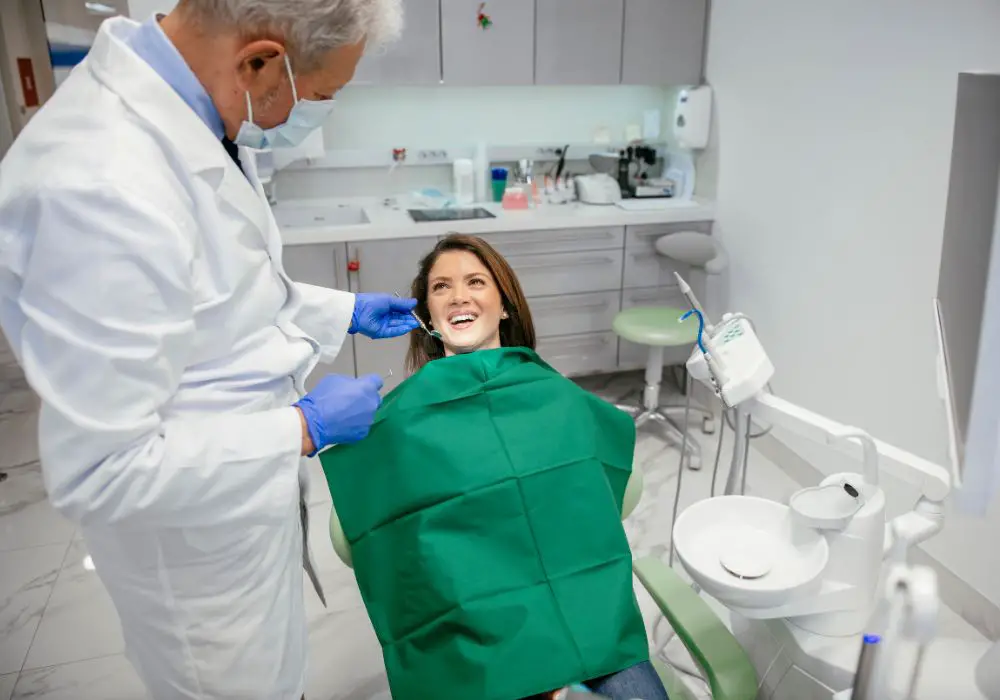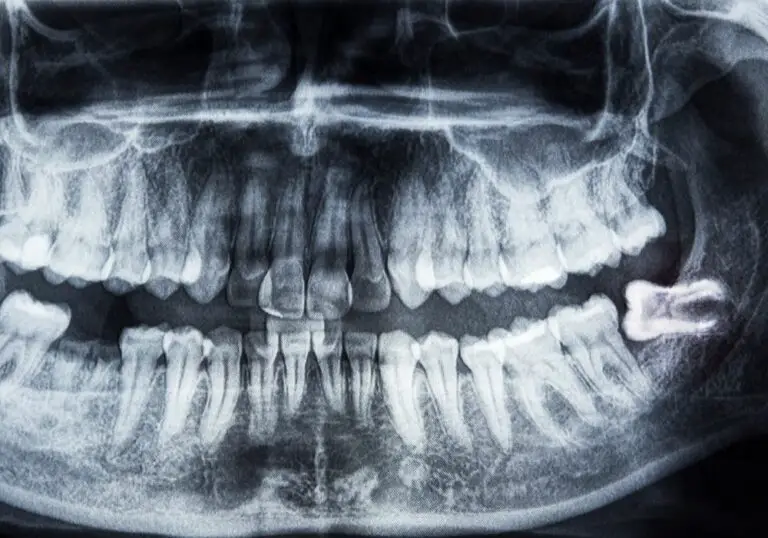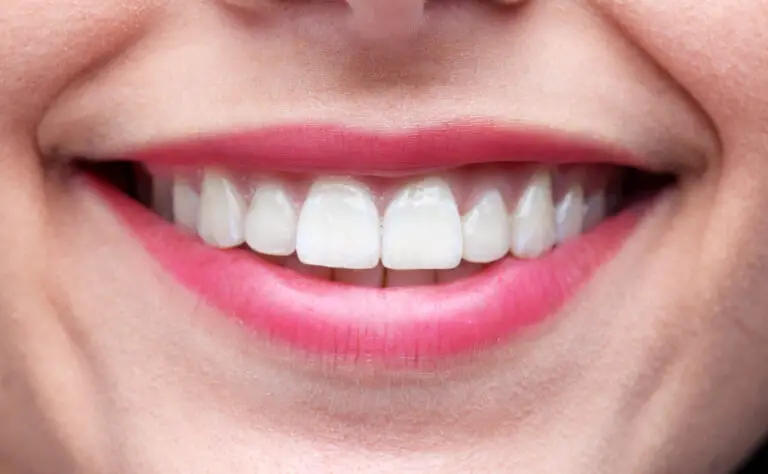Tooth pain can range from a mild discomfort to severe throbbing agony, making everyday activities like eating and sleeping difficult. Determining the underlying cause of tooth pain allows for the most effective treatments to relieve it.
What’s Causing My Toothache?

There are a number of potential sources of tooth pain. Being familiar with them can help you identify the likely culprit behind your toothache:
Cavities
Tooth decay from cavities is a very common source of tooth pain. Cavities form when plaque – a sticky film of bacteria on the teeth – produces acids that destroy the outer enamel layer of the tooth and create a hole. As the decay works its way through layers of the tooth, it can reach the soft inner pulp containing nerves and blood vessels. This leads to inflammation and pain. Biting or chewing and hot/cold foods and liquids may trigger the pain.
Cavities usually start small and grow larger over time if not treated properly by a dentist. Ignoring tiny cavities allows them to expand and burrow deeper into the tooth, causing escalating pain as they penetrate closer to the pulp.
Cracked Tooth
A cracked tooth refers to a distinct split or fracture line in the enamel or layers below it. Cracks can range from minor to severe. Even tiny cracks that are hard to see can allow bacteria to seep inside and infect the pulp. Other causes of cracks include chewing hard foods, grinding teeth, trauma, and deterioration of dental fillings.
A cracked tooth may hurt when chewing or biting. The pain may be intermittent and come and go for some time until the crack propagates deeper. As the fracture worsens, pain can become sharp, sudden and severe.
Dental Abscess/Infection
A dental abscess is a pocket of pus that forms due to a bacterial infection. Abscesses commonly develop from advanced tooth decay, chips/cracks that let bacteria invade the pulp, or due to prior root canal treatment. The pus buildup results from the body’s inflammatory response.
Abscesses cause throbbing pain that can become extreme as the infection worsens. The tooth may feel loose, and chewing intensifies the pain. Swelling of the gums, jaw, and face often accompanies a tooth abscess. Fever, foul taste, and swollen lymph nodes can also occur. Prompt antibiotic treatment is required to clear up the infection before it spreads.
Sensitive Teeth
Teeth become sensitive when protective enamel erodes away, exposing the underlying dentin layer. Dentin contains thousands of tiny tubules that lead directly to the tooth’s nerves, so stimulation triggers pain.
Common causes of sensitive teeth include gum recession, aggressive brushing, acidic foods, grinding teeth, and dental bleaching. The pain is often sharp and stabbing when eating hot, cold, sweet, or acidic foods and drinks. As sensitivity increases, even air and touch can elicit discomfort.
Wisdom Teeth Pain
Wisdom teeth (third molars) are the last adult teeth to emerge, usually between ages 17 to 25. Since the jaw has often stopped growing by this age, wisdom teeth frequently lack enough room to properly erupt. This can lead to partial eruption, impaction, or overcrowding against other teeth.
Partially impacted wisdom teeth allow bacteria to enter around the tooth and cause infections, swelling, jaw stiffness, and severe pain. Wisdom teeth extractions are commonly needed even when no symptoms are present to avoid future problems.
TMJ Disorders
Problems with the temporomandibular joint (TMJ) and surrounding tissues can result in joint pain and dysfunction. The TMJ connects the lower jaw (mandible) to the skull. Complex muscles control its movement for chewing and speaking.
TMJ disorders develop from injury and dislocation of cartilage disc padding the jaw joint, arthritis, muscle spasms, teeth grinding, misalignment of the bite, stress, and clenching due to anxiety. Symptoms include pain in front of the ear that may radiate to the face, jaw clicking, limited jaw mobility, and headaches.
Sinusitis
The maxillary sinuses are located above the upper teeth under the eyes. When sinus drainage passages get blocked, sinus infections can occur. This is known as acute sinusitis. It causes congestion, facial pressure, sinus headache, and even toothaches in the upper jaw, mimicking dental pain. Sinus tooth pain is often worse when tilting the head forward and may accompany other sinus symptoms.
Trigeminal Neuralgia
This chronic facial and dental pain condition affects the trigeminal nerve carrying sensation from the face to the brain. It causes intense, sporadic electric shock-like pain along one or more trigeminal nerve branches. Trigeminal neuralgia tooth pain tends to come and go unpredictably in quick bursts that can feel debilitating.
Post-Dental Treatment Pain
It’s common to have some inflammation and pain for a few days after invasive dental treatments like tooth extractions, fillings, root canals, dental implant placement, and tooth realignment with braces. Extended post-procedure pain that seems to worsen could indicate complications like dry socket or infection.
When to See an Emergency Dentist Immediately

While many common causes of tooth pain can wait a day or two to see a dentist, some circumstances require urgent or emergency treatment to save the tooth and prevent dangerous complications.
Contact an emergency dentist right away if you experience:
- Unbearable toothache or dental pain that started suddenly
- Tooth pain accompanied by facial swelling
- Bleeding from the mouth that won’t stop
- Pain after a tooth is knocked out or displaced from injury
- Difficulty breathing or swallowing
- Numbing, tingling, or drooping in the face
- Severe throbbing pain that prevents sleep or performing daily activities
- Tooth pain along with high fever, chills, and feeling ill
Seeking emergency dental treatment is also crucial after trauma causing teeth to chip or break, and for painful abscesses needing immediate drainage and antibiotics. Lingering tooth pain warrants prompt attention to determine the cause and proper solution.
Relieving Tooth Pain at Home
While waiting to access professional dental treatment, you can take steps to gain temporary relief at home:
Rinse with warm salt water
Swishing a warm salt water solution around the painful area pulls out some infection and debris from cavities, cracks, or abscesses. Dissolve a teaspoon of salt in a cup of warm water and rinse for 30 seconds 2-3 times a day.
Take over-the-counter pain medication
Oral pain relievers like ibuprofen (Advil, Motrin), acetaminophen (Tylenol), aspirin, naproxen (Aleve), and other NSAIDs can all help reduce dental pain and inflammation. Follow dosage on the label.
Use hot/cold therapy
Applying an ice pack wrapped in cloth to the cheek near the aching tooth reduces pain and swelling. Do not place ice directly on skin. A warm compress can also offer relief. Alternate hot and cold every 20 minutes as needed.
Try oil of clove
Clove oil contains eugenol, a natural pain reliever. Place a dab of clove oil on a cotton ball and apply to the problem tooth for numbing relief. You can also try keeping a whole clove in place between the aching tooth and cheek.
Swish whiskey or bourbon
Swishing a sip of whiskey or bourbon around the mouth for a minute helps disinfect a cavity or abscess while dulling nerve sensitivity with alcohol. Spit out the alcohol – do not swallow it.
Drink cold liquids
The cold from smoothies, milkshakes, ice blended coffee drinks, and ice water can calm dental nerve sensitivity temporarily. Avoid chewing ice.
Use topical dental gels
Benzocaine gels like Orajel applied directly to the tooth or gum offer quick localized numbness by blocking pain signals in nerves. This provides temporary relief only.
Avoid chewing on sore tooth
Chew food carefully and only use the unaffected side of your mouth to prevent further damage to the painful tooth. Stick to soft foods until seeing a dentist.
Professional Dental Treatments

For lasting relief from tooth pain, consult a general dentist for diagnosis and treatment planning. Options include:
- Fillings – Smaller cavities can often be repaired by removing decay and replacing the space with composite resin or metal amalgam fillings.
- Crowns – When teeth become extensively damaged, a dental crown fully caps and protects the remaining tooth. Crowns can prevent cracks from worsening.
- Root Canal Treatment – For deep decay, injury, cracks, or chips causing inflamed/infected pulp, root canal therapy saves the tooth by removing pulp and sealing it.
- Medications – Antibiotics, anti-inflammatories, and pain relievers may be prescribed to manage infection and pain.
- Tooth Extractions – Removing non-salvageable heavily decayed, fractured, or chronically infected teeth may be necessary.
- Dental Splint – Stabilizing loose teeth with a splint reduces movement causing pain.
- Night Guards – Custom night guards protect teeth from fracture triggering pain in people who grind.
- Nerve Treatments – Procedures like microvascular decompression can be used to treat trigeminal neuralgia.
- TMJ Therapy – Physical therapy, anti-inflammatory drugs, appliance therapy, and surgery can help relieve TMJ joint pain.
- Sinus Treatment – Treating acute sinus infections with antibiotics, steroid nasal sprays, decongestants and nasal irrigation helps resolve sinusitis tooth pain.
- Gum Disease Therapy – Deep cleanings, antibiotics, and gum grafting treat advanced gum disease causing loosening teeth and bone loss.
The sooner tooth pain is evaluated and treated properly, the better chance of reversing damage and saving the tooth. Left untreated, many toothaches lead to complications necessitating extraction. Always follow your dentist’s treatment recommendations for optimal oral health.
Frequently Asked Questions
What foods help relieve tooth pain?
Cold foods like ice cream can numb tooth pain. Soft, smooth foods are easier to chew with a sore tooth. Try yogurt, applesauce, mashed potatoes, protein shakes, overcooked pasta, scrambled eggs, and bananas. Avoid hard, crunchy, acidic, sticky, chewy, hot, and sugary foods.
Should I remove a painful tooth at home?
Never attempt to extract a tooth yourself. Doing so improperly can lead to severe infections and uncontrollable bleeding. Always see a dentist to have a tooth removed properly and safely if extraction is warranted.
Can I wait a week to see a dentist for tooth pain?
Never delay more than a day or two to have tooth pain evaluated. Many causes like infections can rapidly worsen, potentially developing dangerous complications. Dental conditions almost always get worse without treatment, so prompt dental attention is key.
Can a dentist payment plan help me afford urgent tooth pain treatment?
Yes, many dentists offer flexible financing options, payment plans, discounts, and assistance programs to help patients budget for urgent dental care they can’t fully cover upfront. Insurance copays also spread payments out.
Does tooth pain ever go away permanently on its own?
Tooth pain usually doesn’t resolve permanently without treatment. While it may temporarily stop, the underlying problem remains and will likely continue worsening if not properly diagnosed and treated by a dentist. Don’t ignore lingering toothaches.
Conclusion
Tooth pain has many potential causes requiring different treatments for relief. Accurately diagnosing the source of tooth pain allows dentists to provide appropriate therapy. While home remedies can temporarily alleviate discomfort from dental issues like cavities, long-term solutions require professional dental care. Ignoring persistent toothaches or delaying needed treatment leads to bigger problems. Seek help quickly at the first sign of tooth pain before the condition escalates and causes lasting damage. Addressing toothaches early optimizes outcomes and oral health.






